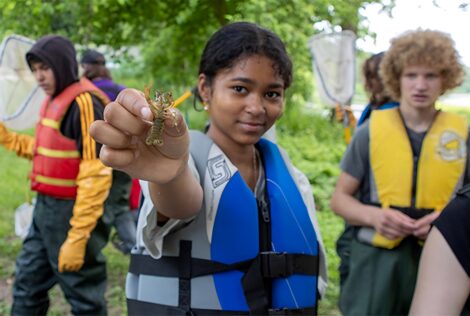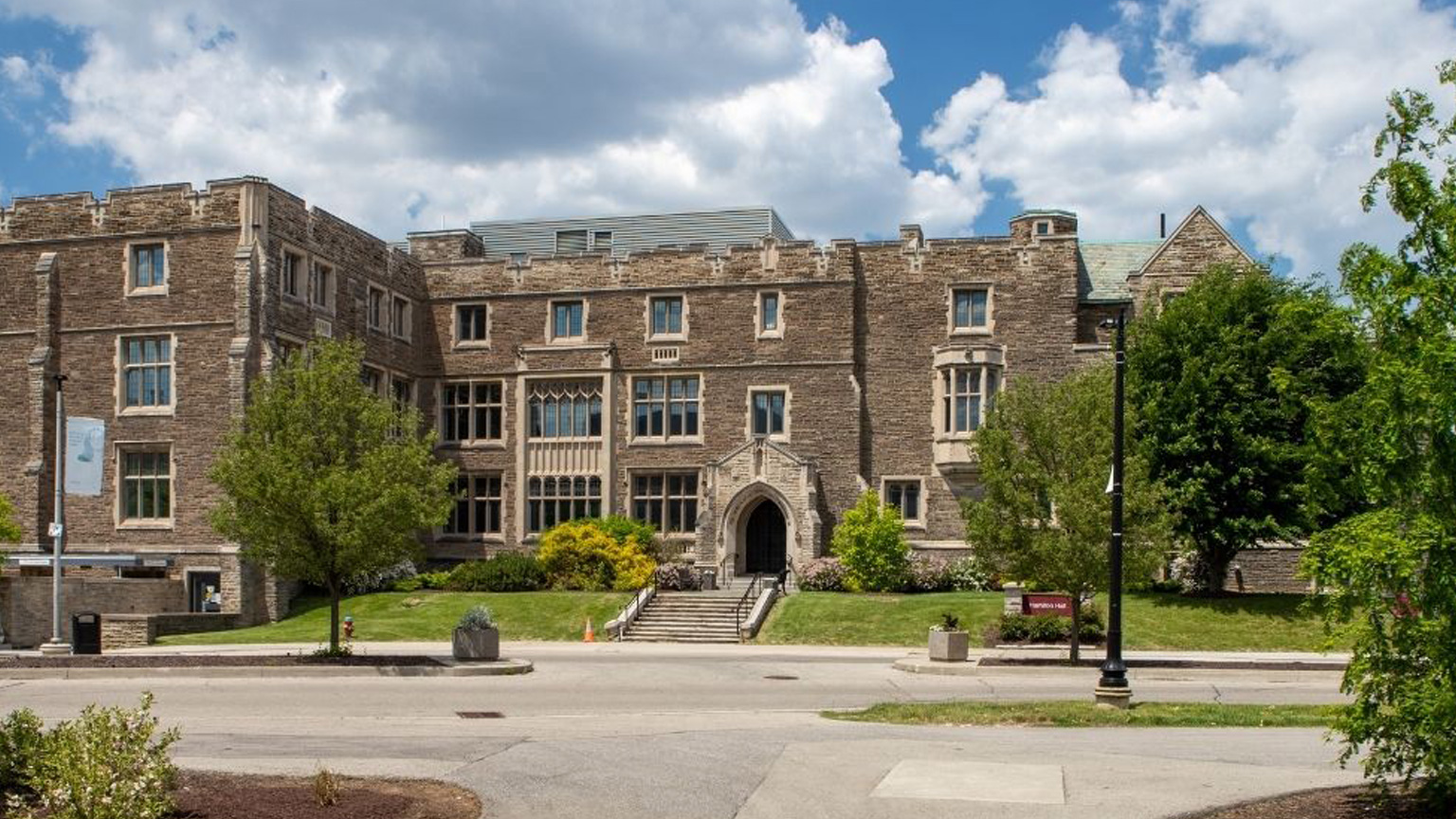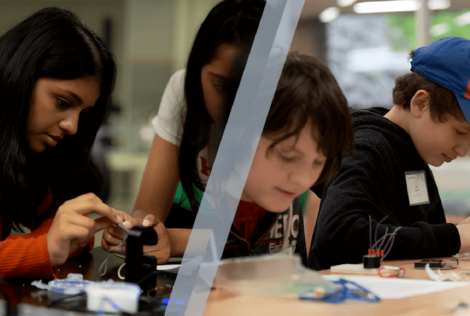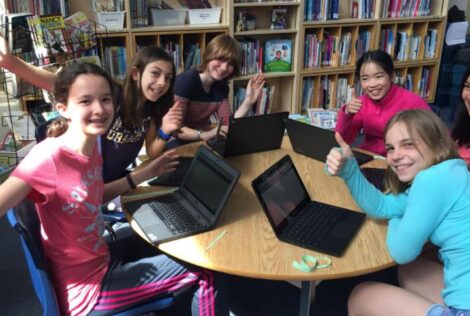

The robots are tiny and round, with flashing lights and lasers capable of reading colours.
The girls are typical boisterous Grade 7 students.
But put the two together under the guidance of an enthusiastic instructor and what you get is the type of learning that might just change a future.
With simple coloured patterns they’ve drawn on a piece of paper, the girls direct the movements of the tiny devices known as Ozobots. Different colour combinations instruct the robot to speed up, slow down or make a u-turn. Four small squares of alternating red and green tell it to perform a tornado move – spinning rapidly in circles – before continuing on its path across the page.
For the students, who live in one of Hamilton’s most economically disadvantaged neighbourhoods, the activity appears to be more about fun than science. But what they’re learning amidst the laughter is how to program the robots, says Steph Elder, Outreach Director for Youth Programs with McMaster’s Faculty of Engineering.
“Coding isn’t always about sitting at a keyboard and typing ones and zeros,” she says. “This is a different way of coding, but the important thing is that they’re learning the idea of thinking in a logical progression.”
“Showing kids how simple instructions can be combined to direct a computer to do complex tasks helps them understand and use technology differently.”
As the Ozobots beep, flash and twirl, she encourages the girls to experiment, to ask questions and to explore their curiosity about what might happen if they try something new. When she pulls out iPads to replace the paper and enable more complex patterning, the activity’s cool factor zooms even higher.
In her monthly visit to the after-school YWCA ‘STEM Girls’ club, Elder keeps her eye on the big picture: engaging the middle-school girls with math, science and technology activities. As they pick their high school courses next year, she wants them to feel confident and interested in an academic path that could lead them into STEM careers.
“I want to empower the girls to see that engineering and science are something they can do,” she says.
Inspiring young people to imagine themselves as tomorrow’s engineers, inventors, scientists and computer geniuses is the fundamental goal of the engineering faculty’s well-established outreach program.
“We use fun, hands-on activities to show kids that engineering and science are all around us, and they aren’t scary or difficult,” explains Elder.
The idea of reaching out to the community’s young people took life in 1991, with the launch of the Venture summer program for elementary students. From dissection to design, a range of science-based activities encouraged campers to explore and experiment.
Over the intervening 26 years, the summer programs have become an immense success. Thousands of young people, from early elementary to senior high school, take part in Venture and LEAP programs every summer. Specialty streams, including an all-female program, Yes SHE Can!, a computer science program Codemakers, and most recently, CanCode, a federally-funded digital literacy program, have been added to the program roster.
Many young people are eager return campers, back on campus each year to reconnect with friends and build their knowledge base. A number of today’s undergraduate instructors can trace their path through the programs and directly into McMaster’s Faculty of Engineering.
And as the success of the outreach program has grown, so too has its ambition.
In recent years, efforts have focused on bringing science and engineering programming to young people in communities that are typically under-represented in STEM fields, says Elder.
Strong connections have been established with schools and teachers on the nearby Six Nations of the Grand River reserve. Throughout the school year, Elder organizes school workshops, teacher training and culturally specific activities for Indigenous youth.
March Break camp, an annual two-day InSTEM conference and week-long summer programs all invite Indigenous young people onto campus to explore university life and take part in activities that connect engineering and science with traditional knowledge.
“After our InSTEM conference, I had a teacher approach me to say he had never seen his student so engaged,” recalls Elder. “The student, who hadn’t done well in class, was exploring and asking questions and was truly interested in what he was doing. The teacher was so happy to see him exposed to something new that really clicked for him.”
Outreach efforts also focus on connecting with young people in Hamilton’s least wealthy neighbourhoods, where low-income families and new immigrants cluster. And for students who find science or engineering inspiration in a classroom workshop or after-school activity, Elder can point them toward free or subsidized summer activities.
The outreach efforts have recently earned the support of the federal government’s CanCode grant. Venture and LEAP will be receiving part of the funding award to Actua, the national organization that represents the Faculty of Engineering Youth Programs at McMaster. This will be put towards supporting free programming that is working to teach digital literacy, computational thinking and coding.
That money has enabled the purchase of items like iPads and Ozobots, which Elder uses to engage the kids in a range of activities, from programming to movie-making to sound production.
“We’re in a really big digital landscape and there are a lot of tools we can use to teach kids and get them excited about technology,” she says. “We can help them move from being digital consumers to being digital producers.”


